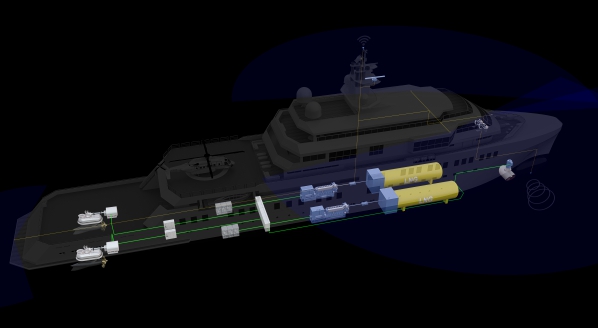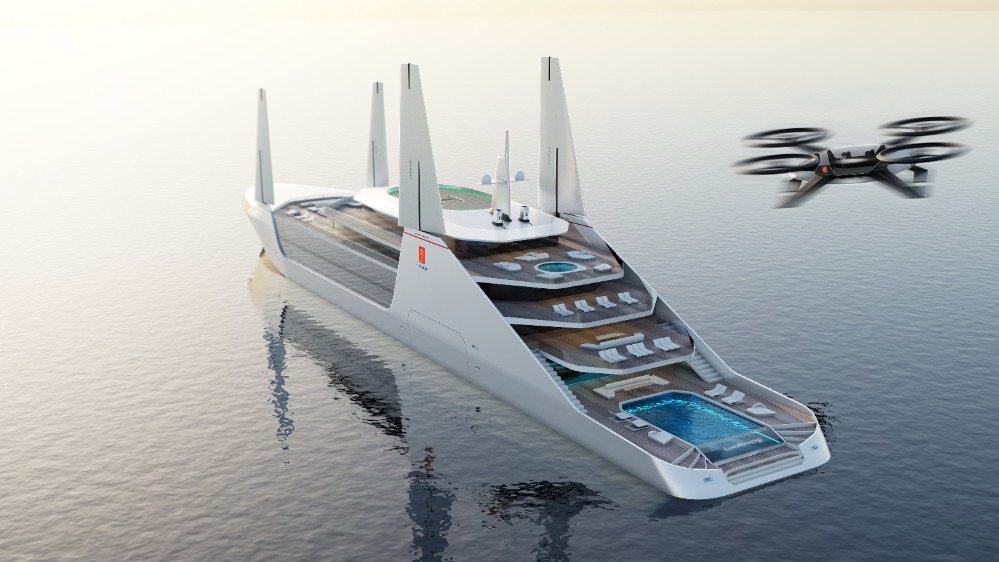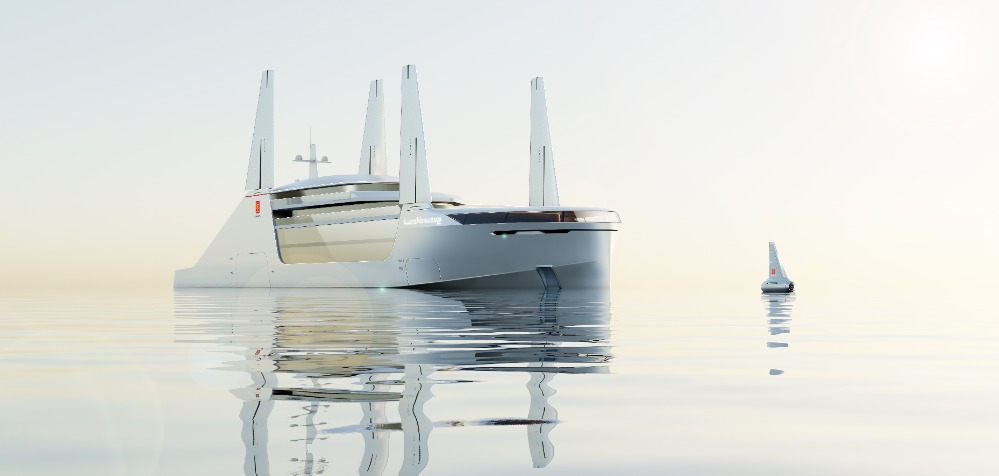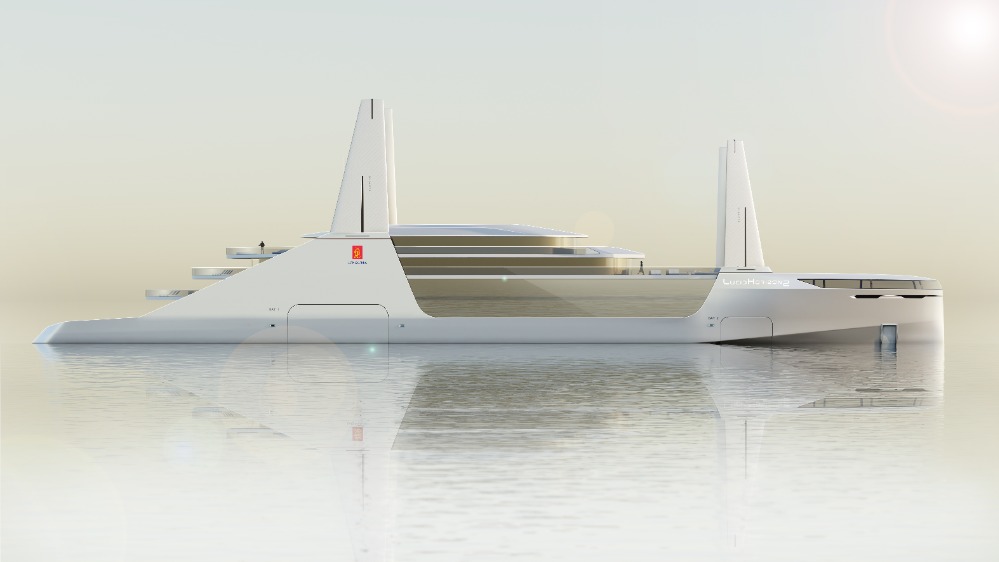Sustainable yachting: innovative solutions for the future
Kongsberg Maritime discusses the main trends with regards to emerging technology in the maritime industry…
Following on from recent coverage of Kongsberg Maritime's current products and systems for sustainable yachting, the company's ongoing investment into research and development is also focusing on a number of innovations that could be beneficial for superyachts in the future. According to Oskar Levander, senior vice president of Business Concepts at Kongsberg Maritime, there are two main trends with regards to emerging technology in the maritime industry, and these are digitalisation and the environment.
“In terms of digitalisation, the key is to connect the vessel in a completely different manner and enable new ways of operating, managing and designing it,” Levander explains. “For example, there are exciting opportunities coming from the situational awareness technology that we are working on. By integrating cameras, radars, sonars and lidar that can detect what is around the vessel, the system could create a realistic 3D world for the captain to better experience what is happening.”
Not only would a situational awareness system be beneficial for the navigation of the yacht, but it would enable owners and guests to experience the yacht in a completely different way by allowing them to see below the water’s surface. If the technology becomes reliable enough, Levander believes it could even have the potential to negate the need for a bridge situated in the traditional position, and therefore open up exciting opportunities in terms of yacht design.
The other trend in terms of future innovations for Kongsberg Maritime is the environment. “One of the biggest challenges today is that we need to reduce greenhouse gas emissions to combat climate change,” says Levander. “Many yacht owners are very keen to be able to minimise their carbon footprint and, for them, there are a range of different technologies out there that could improve efficiency or even enable zero emissions.”
“Many yacht owners are very keen to be able to minimise their carbon footprint and, for them, there are a range of different technologies out there that could improve efficiency or even enable zero emissions.”
To help yacht owners achieve their environmental goals, Kongsberg Maritime has been developing solutions that incorporate different fuelling options. For example, the company has been working with Liquefied Natural Gas (LNG) for 20 years - an odourless fuel that is cleaner than diesel, but is still fossil based. As a next step on from LNG, Kongsberg Maritime is researching non-fossil-based fuels like biogas and hydrogen.
“At the moment we are working on hydrogen-fuelled ship concepts for ferries and cargo vessels,” says Levander. “In some cases, we have used compressed hydrogen and, in others, liquified hydrogen. We then take that fuel to a fuel cell, which creates electricity for the ship. Usually we combine the fuel with battery packs, which would create zero emissions, meaning no carbon footprint and no exhaust. The only byproduct is water and it is also very quiet in operation, but the drawback is the cost of the fuel cells.”
While the technology to develop hydrogen-fuelled vessels exists, such projects are still in the R&D phases. “We think going green will be a trend for some yacht owners and hydrogen is one option, but biogas is another,” concludes Levander. “Biogas would allow vessels to use gas engines, as opposed to fuel cells, so it would require a smaller investment. These are all technologies that we are developing for commercial shipping, but will have a lot of positive features that will benefit the yacht industry, such as improvements in comfort.”
Integrating some of the aforementioned innovations is Kongsberg Maritime's 130m zero-emission yacht concept, Lucid Horizon 2 (pictured above), the energy source for which is hydrogen fuel cells and batteries. Two liquefied hydrogen tanks can be seen from aft in front of the pool deck, behind the glass window. The four sail wings deliver auxiliary wind power to reduce energy consumption in transit. A USV drone explores the sea bed and sends back live 3D charts of the seafloor to enable operation in uncharted waters, as well as the detection of wrecks and good diving locations. An observation lounge is located forward in the bow of the yacht.
Profile links
NEW: Sign up for SuperyachtNewsweek!
Get the latest weekly news, in-depth reports, intelligence, and strategic insights, delivered directly from The Superyacht Group's editors and market analysts.
Stay at the forefront of the superyacht industry with SuperyachtNewsweek
Click here to become part of The Superyacht Group community, and join us in our mission to make this industry accessible to all, and prosperous for the long-term. We are offering access to the superyacht industry’s most comprehensive and longstanding archive of business-critical information, as well as a comprehensive, real-time superyacht fleet database, for just £10 per month, because we are One Industry with One Mission. Sign up here.
Related news

Sustainable yachting: current products and systems
Kongsberg Maritime discusses the integrated solutions for bridge, control and propulsion systems available today
Technology

‘Knowledge is the fuel of innovation’
Lateral Naval Architects on its involvement with Oceanco NXT and building the next generation of yachts
Design

Preparing for the next generation
Plexus Unity answers current challenges in connectivity and prepares for the future
Technology
Related news
‘Knowledge is the fuel of innovation’
5 years ago
Preparing for the next generation
5 years ago
NEW: Sign up for
SuperyachtNewsweek!
Get the latest weekly news, in-depth reports, intelligence, and strategic insights, delivered directly from The Superyacht Group's editors and market analysts.
Stay at the forefront of the superyacht industry with SuperyachtNewsweek






